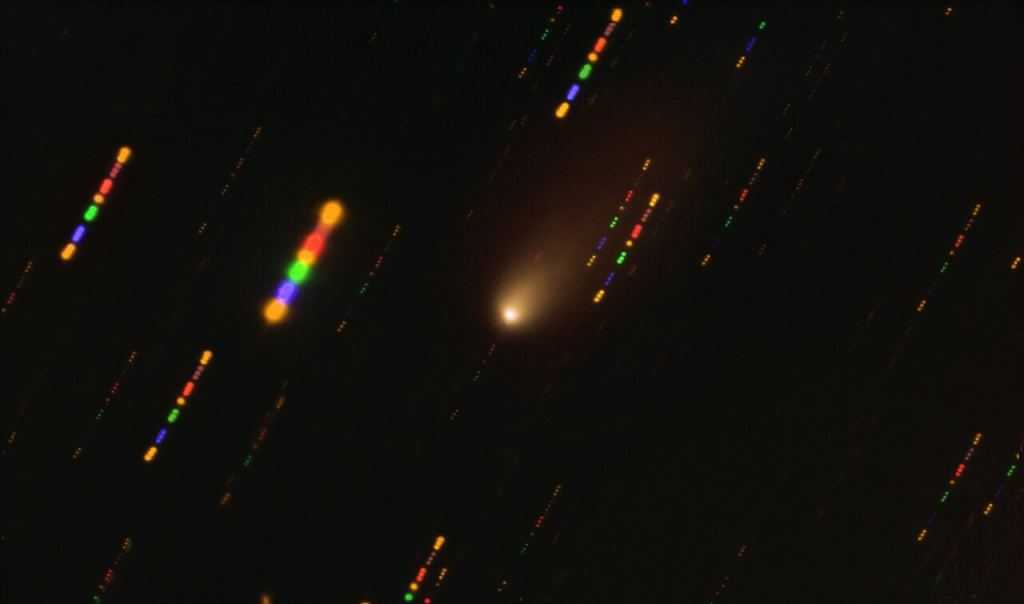In outer space, the location of an object has a huge impact on its temperature. The closer the object is to its star, the hotter it is probably. Heat then plays a major role in the materials present in the atmosphere of that object, if there is one. Lighter elements such as hydrogen and helium and much easier to take on a gaseous state and create an atmosphere. So it came as a surprise when two different teams found much heavier elements in the atmosphere of comets relatively far from the Sun. And one of those comets was from another solar system.
Many comets are metallic, so it was not surprising that elemental metals such as iron and nickel were present on their surfaces. And when metallic comets approach the sun, these elements can sometimes sublimate in the cloud of dust that surrounds the comet. Astronomers have observed this phenomenon for years, and it makes sense given the temperatures involved.
When a team of astronomers from the University of Liège studied the atmospheres of a series of comets relatively far from the solar system, they found strange spectral lines they couldn’t explain. Use of the European Southern Observatory Very large telescope (VLT), they were looking at comets that were three times farther from the sun than Earth, making them cold and stable compared to the comets that were closer.
After some more research, the team realized that the spectral lines they were examining were representative of very weak signals for iron and nickel. Strangely, the two elements had almost the same concentration, with about 1 g of iron and 1 g of nickel per 100 kg of water in the comet’s atmosphere. Closer to the sun, where it is more common to find these heavier elements in the atmospheres of comets, there is typically about 10 times more iron than nickel.
Credit: ESO / Yuri Beletsky
This could mean that there is a new material that contains iron and nickel and has a much lower sublimation temperature. Or there could be still unexplained reasons for the appearance of these metals. However, the team has already taken a few steps forward, including reanalyzing other older data to check if weak spectral lines are present as well. Soon they will also have a new tool on the Extremely large telescope called the Mid Infrared ELT Imager and Spectrograph (METIS) which will allow them to determine the exact composition of the material that led to atmospheric iron and nickel.
Unfortunately, the team studying the other object found with heavy metals in its atmosphere will not be able to use METIS to observe it. This is because the object, 2I / Borisov, is an interstellar comet that passed through our solar system, split into two pieces, and flew out of range of our instruments a few years ago.

Credit – ESO
The team did, however, use a tool they had at the time – the X-shooter spectrograph as a VLT. Although they did not find any iron in Borisov’s atmosphere, they did find atomic nickel. Given that the comet was 300 million kilometers from the sun when it was observed, this is again surprising given that previous estimates would have predicted the comet to be too cold to contain atmospheric nickel.
While Borisov himself may be out of sight, now that we know what to look for, it’s likely we’ll find more interstellar intruders in the near future. With better observational instruments and new theories as to why these unexpected elements appear in cometary atmospheres, the future looks bright for cometary science.
Learn more:
ESO – Heavy metal vapors unexpectedly found in comets in our solar system – and beyond
Nature – Iron and nickel atoms in cometary atmospheres even far from the Sun
Nature – Atomic nickel gas in the coma of interstellar comet 2I / Borisov
Sky and telescope – INTERSTELLAR AND SOLAR COMETS SHARE A SURPRISING INGREDIENT: NICKEL
Main picture:
Representation of the elements found in comets using the VLT.
Credit – ESO
 Universo Viviente
Universo Viviente



